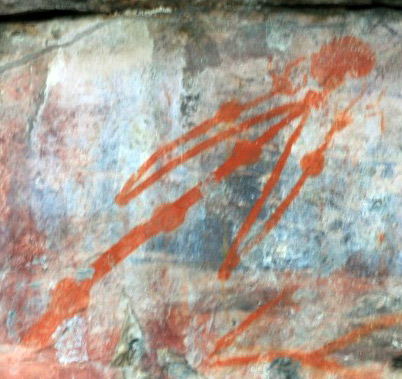
| Search JoyZine with Google Site Search! |
Sickness Country
The decision by the Hawke government on June 17, 1991 no longer allow mining at Coronation Hill in Kakadu National Park was a victory for the traditional owners, the Jawoyn, and for the conservation of the region. Debra Wirth spoke to the executive officer for the Jawoyn people, John Ah Kit, about this victory and what land rights mean for his people. What is the significance of Coronation Hill for the Jawoyn people? Guratba, as we call it, which is known to non-Aboriginal people as Coronation Hill, is a sacred site of very big importance to the Jawoyn people. It is connected to the major site in the Sickness Country called Big Sunday, or Nilaynejarrang. Big Sunday is the major Bula site which is connected to Guratba, and other sites within the Sickness Country. The Jawoyn believe that Bula, the creator, rests and is lying dormant under the Sickness Country and is sort of wired up to these sites, so that if one site is destroyed then it has a chain reaction that will destroy the other sites within the Sickness Country. There are many Aboriginal people in the surrounding areas, throughout Arnhem Land, who have ceremonial connections with Bula, and it's very important that the Jawoyn people protect Bula and ensure that Bula is not disturbed and therefore there is no mining in that part of the Sickness Country whatsoever, because it is so integral to the living culture of the Jawoyn Aboriginal people. Coronation Hill has been mined for uranium in the past. A part of Coronation Hill was mined in the '50s, but you must understand that Aboriginal people were not recognised in this country until the 1967 referendum. The Department of Native Affairs had a policy of getting Aboriginal people off their traditional lands and putting them into compounds and reserves and communities of that nature, because it was seen by the government of those days that these "nomadic savages" shouldn't be left to wander around aimlessly on their country, that they should be educated like the white man and be introduced into the Western culture. Nobody had even thought of recognising Aboriginal culture and Aboriginal traditional owners and senior custodians and therefore nobody wanted to consult with them on whether there was sacred sites in that country and whether they could allow mining to go ahead or not—not only in the Sickness Country but throughout Australia. Has the site recovered from the mining conducted in the 1950s, or are the effects still apparent? There is a small hole in the hill, which has an effect on the hill, but one must also understand that the Jawoyn were very concerned when the mining had taken place in the '50s. There was an epidemic of whooping cough that struck the Aboriginal people and also some miners who died. The Jawoyn attribute those deaths to the disturbance of Bula during the 1950s. They attribute the loss of approximately 130 Jawoyn people to the mining which was disturbing Bula.
|
